Enter our photo competition HERE Get involved
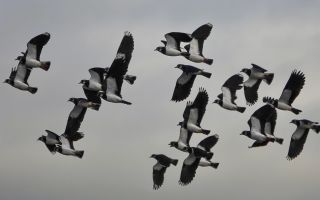
The State of Nature 2023 and Morecambe Bay
According to the State of Nature Report 2023, the UK has experienced a significant loss of biodiversity and, as a result, the UK is now one of the most nature-depleted countries on Earth.
The State of Nature Report 2023, compiled by 60 research and conservation organisations offers a worrying view of the state of nature. It also confirms that intervention from conservation projects and strong environmental protections through legislation can have a positive impact on nature, human wellbeing and the natural resources we rely on.
The report headlines
- The species studied have, on average, declined by 19% in the UK since monitoring began in 1970.
- One in six species is at risk of becoming extinct in Great Britain.
- Widespread animals and plants such as swifts, starlings, hedgehogs, chamomile are becoming rarer and other well-loved species such as the hazel dormouse and the lady’s slipper orchid face an uncertain future too.
- Bird species showed alarming results with 43% at risk of extinction.
- There has been a 24% drop in the abundance of 13 UK seabird species since 1986; that figure is an alarming 49% for 11 seabird species in Scotland.
- The distributions of half of flowering plant species have decreased across Great Britain by 54%.
- The distributions of invertebrates have on average decreased across the UK by 13%.
- There has been an 18% decrease in UK distributions of pollinator species and a 34% decrease in UK distribution of pest control species.
- The report argues that decline is largely a result of human activities causing habitat loss, diseases such as avian flu and burning fossil fuels which has altered the climate.
- The report also reveals that while UK nature is in crisis, some species have managed to thrive and we have the solutions to restore nature.
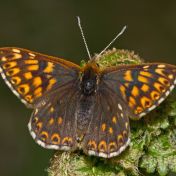
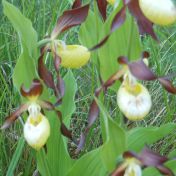
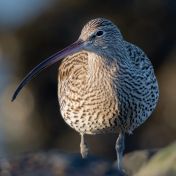
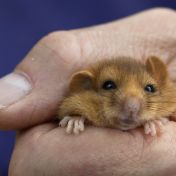
How does this decline in nature affect us and Morecambe Bay?
Evidence shows that time spent in nature improves our mental health and well-being. With a clear link between nature and its positive impact on human health, helping nature to thrive in Morecambe Bay will, in turn, benefit the well-being of our communities and visitors.
Currently, Morecambe Bay supports an outstanding diversity of wildlife. It is one of the UK’s most important biodiversity hotspots with an extraordinary mosaic of habitats - headlands, tidal islands, cliffs, shingle, saltmarsh, wetlands and mosses meaning the Bay is home to internationally significant populations of birds, flora, and invertebrates.
Morecambe Bay is well known for its significant populations of birdlife and its role in feeding passing and overwintering birds. It’s estimated that a quarter of a million birds use the Bay for feeding every year. In addition to its birdlife, the Bay's fringe habitats, such as limestone and woodland, are home to other significant and declining flora and fauna such as:
The natterjack toad - considered rare, one quarter of the UK’s population live here on the sand dunes around Morecambe Bay.
Orchids - the habitats around Morecambe Bay support a diverse range of orchids across grassland, limestone and woodland sites. Of 52 orchid species found across the UK, Morecambe Bay supports one third including the rare Lady’s Slipper Orchid.
Butterflies and moths – the limestone areas of Morecambe Bay are an important site for butterflies and moths in the north of England. The Bay is a stronghold for the declining High Brown Fritillary and Pearl-bordered Fritillary butterflies. The health of the Bay's butterfly and moth populations is underpinned by plants which sustain feeding caterpillars.
The Bay's diverse habitats support a dazzling array of species but we know the delicate threads that stitch our Bay’s wildlife and habitats together are under strain.
Whilst Morecambe Bay is a celebrated mosaic of habitats and a stronghold for some species, the area must be seen within the context of nature in decline across the UK - that means the plants, insects, flowers and birds we see around the Bay are at risk from further decline caused by human activities, climate change, pollution and unsustainable development.
Sadly, the nature crisis and biodiversity loss is very evident here on our own doorstep. Bird species such as Lapwing and Curlew, once abundant in Morecambe Bay, have seen significant decline for decades. Both species have been added to the Red List on the UK Conservation Status Report and are at risk of extinction. Red is the highest conservation priority, with species on this list needing urgent action. And now with Avian Flu present in the UK, even abundant bird populations that reside and feed in Morecambe Bay are at risk.
It's also worth noting that some areas of the Bay have become unsuitable for wildlife affected by recreational disturbance and human activity. Coastal areas that are subject to busy footfall, traffic, litter, light pollution and noise can make habitats unsuitable for species to breed and raise their young. In order to thrive, nature needs suitable space and conditions.
What are we doing to help? We champion Morecambe Bay’s wildlife and nature by:
- Connecting school children and young people to the nature and heritage of Morecambe Bay through learning programmes that offer opportunities to explore the Bay’s coastline and help build future generations that will care for Morecambe Bay. In the last ten years, we've connected 1197 school children and 47 schools with Morecambe Bay.
- Continuing to work for and support nature & wildlife and restore species that are under threat. We've achieved this through projects such as BOOM (Back On Our Map) - a pioneering, four year project which reintroduced a suite of locally threatened or extinct species – Hazel Dormice; Small Blue Butterflies; Aspen; Sundew; Spiked Speedwell and Maidenhair Fern - to areas of South Cumbria including Morecambe Bay. Please read the full project outcome and data.
- Completing 55 vital surveys of heritage and nature, and leading major campaigns to protect roosting and nesting birds
- Working alongside stakeholders on ‘Our Future Coast’ - a project that will create natural buffer strips to increase coastal resilience and provide multiple benefits such as reducing coastal erosion and increasing biodiversity. We’ll also work with communities to understand how we can work with nature to protect the Bay from coastal flooding and climate change.
- Working to make the Bay easier to explore on foot, bike or assisted mobility transport. By creating more traffic-free, active travel routes residents and visitors can explore more of the Bay’s nature safely and enjoy the boost to health and wellbeing.
- Developing our free ‘tramper’ hire service (off-road mobility scooters) to support people who can’t walk far and enable them to access the amazing landscape and viewpoints around the Bay so they can access the health and wellbeing benefits that come from time spent outdoors.
- Continuing to clean up plastic and litter from the Bay with volunteers. Over the last ten years, we've removed 85 tonnes of litter from the bay’s beaches, footpaths and trails (the same as 8 double decker buses) to keep our Bay clean and nature-friendly.
- Running a ‘Love Morecambe Bay’ campaign over the next three years to galvanise affection and support for this special place, and to raise awareness of the risks to the valuable nature and heritage of Morecambe Bay.
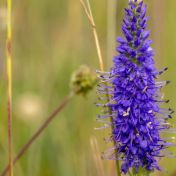
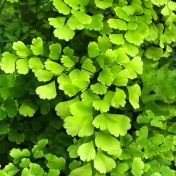
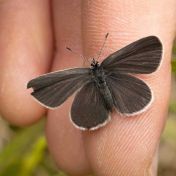
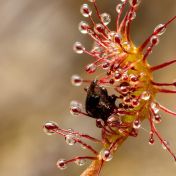
What can you do to help?
There are so many things we can all do to help. All of us can live more sustainably and make choices that support nature - and it can start small and it can start local which means we can all have a positive impact on Morecambe Bay and its future. Here are a few things you can do:
Follow the Coastal Code – Following the Coastal Code is a practical and impactful way to respect, care for and support Morecambe Bay. Following the Code really does make a difference to Morecambe Bay’s wildlife, nature and habitats.
Join a beach clean or litter pick – can you help keep Morecambe Bay litter- and plastic-free? Reducing litter in the Bay helps protect wildlife habitats and reduces the amount of waste that pollutes our land and sea. Get involved at one of our one off events or join a group.
Manage your own nature habitats – use your windowsill, garden, yard, office space or school to support nature. Small, localised contributions from all of us can help nature thrive. Pick up some ideas here.
Ditch the car for public transport, the bike or take a walk – can you leave the car at home now and again and make your journey in a different way. Explore local transport options, explore cycling routes to work, to town or for fun. Explore Ways Around The Bay for ideas and routes.
Do you know someone who struggles to get outdoors and enjoy nature? Spread the word about our free Trampers. A Tramper is an all-terrain mobility scooter which can provide a life-changing experience for those that struggle to get outdoors and into the Bay. Explore our free to hire Trampers here.
Shop to support Morecambe Bay – do you love Morecambe Bay? Then have a look at our fundraising merchandise. From mugs and tote bags, put a little bit of Morecambe Bay into your everyday knowing what you buy helps to raise funds and support this special place.
Donate to our work – A really simple and effective way to help is to make a one off or regular donation. All funds raised support the nature, culture and heritage of Morecambe Bay meaning your money goes to the people and places of Morecambe Bay that need support. From supporting nature programmes to keeping the Bay clean and litter-free – your money creates impact and makes a difference.
Join an event – Why not join us at an event? From our programme of talks about Morecambe Bay to nature walks and litter picks, our events are a great way to connect with Morecambe Bay. Help keep the Bay clean, learn about its flora and fauna or join us on a nature walk.
Leave a gift in your will – does Morecambe Bay hold a special place in your heart? You can help look after this amazing place long into the future by leaving a gift in your will. Explore the impact gifts in will can have here.
Register your interest as a volunteer – From schemes to record and monitor wildlife, to clearing habitats, there are so many tasks that need your time. You can register your interest with Morecambe Bay Partnership or choose from the many other charities who can make a real difference with the gift of your time.
Campaign or fundraise - from protecting important sites for wildlife to defending the laws that protect nature you can make your views count. You can also fundraise for nature. Contact your preferred charity and find out what you can do to help raise funds. From sponsored walks to bake sales there are ways you can raise funds to support nature.
Main image: Lapwings © Jarrod Sneyd
